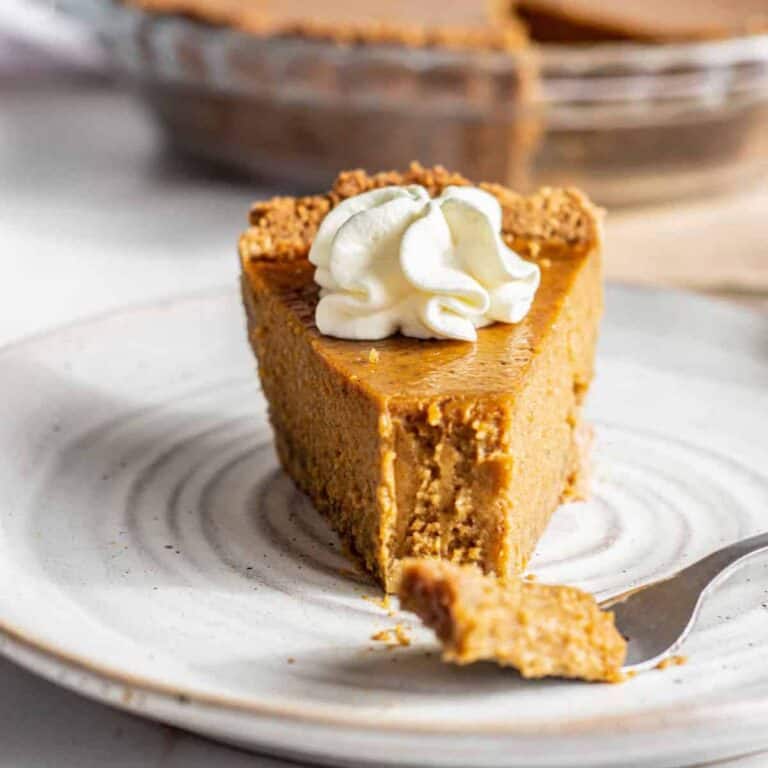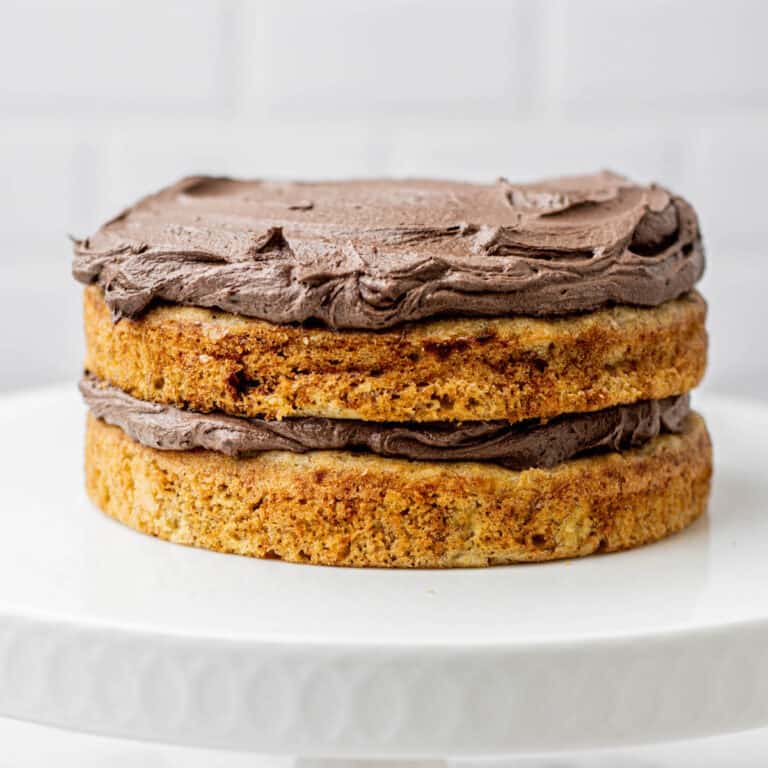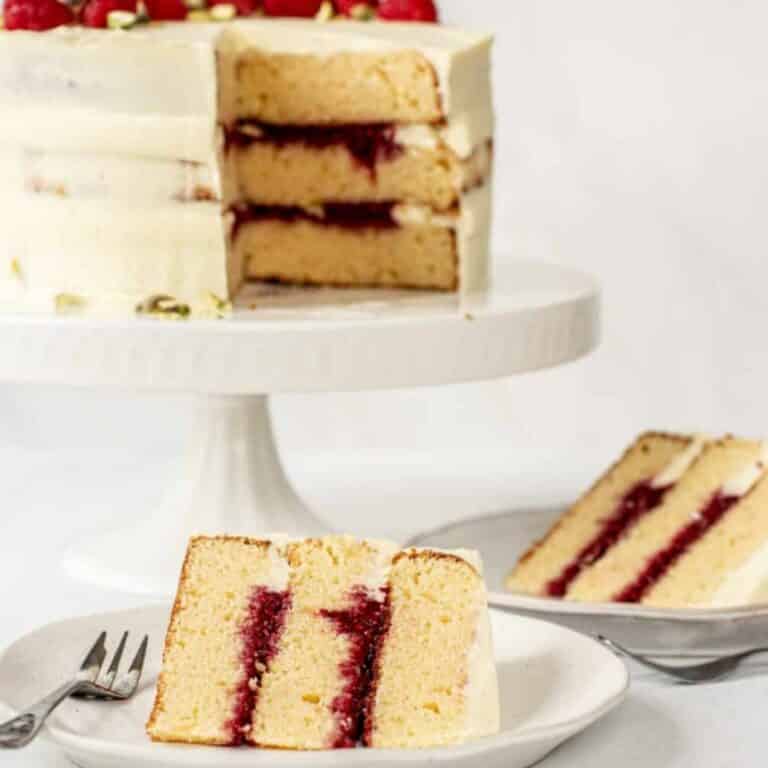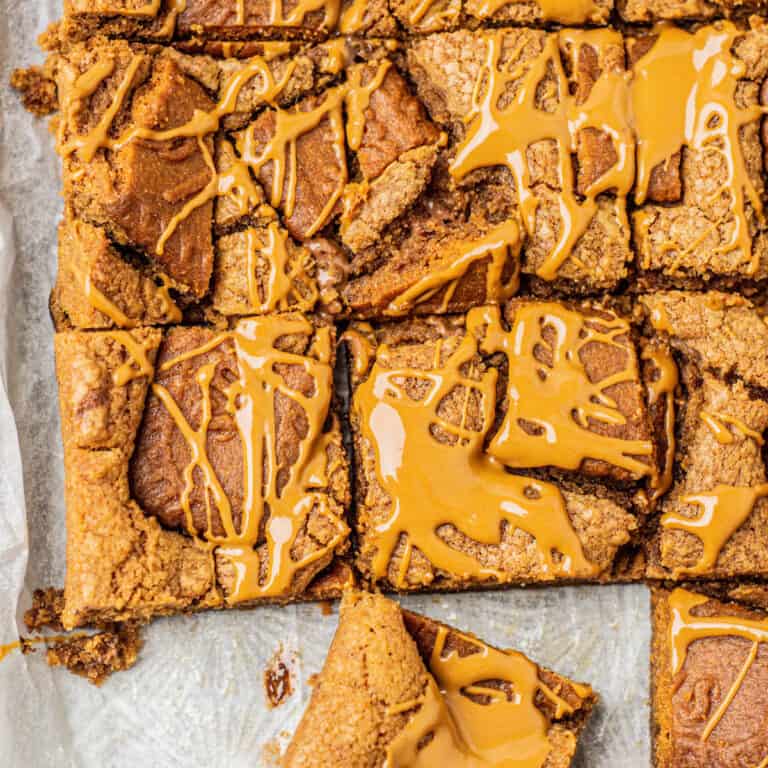Mini Vanilla Cake with Brown Butter Frosting
This mini vanilla cake recipe features two light, tender 6-inch mini cakes sandwiched with creamy brown butter frosting. A mini cake like this serves eight generous slices, making it the perfect size cake for a small group.
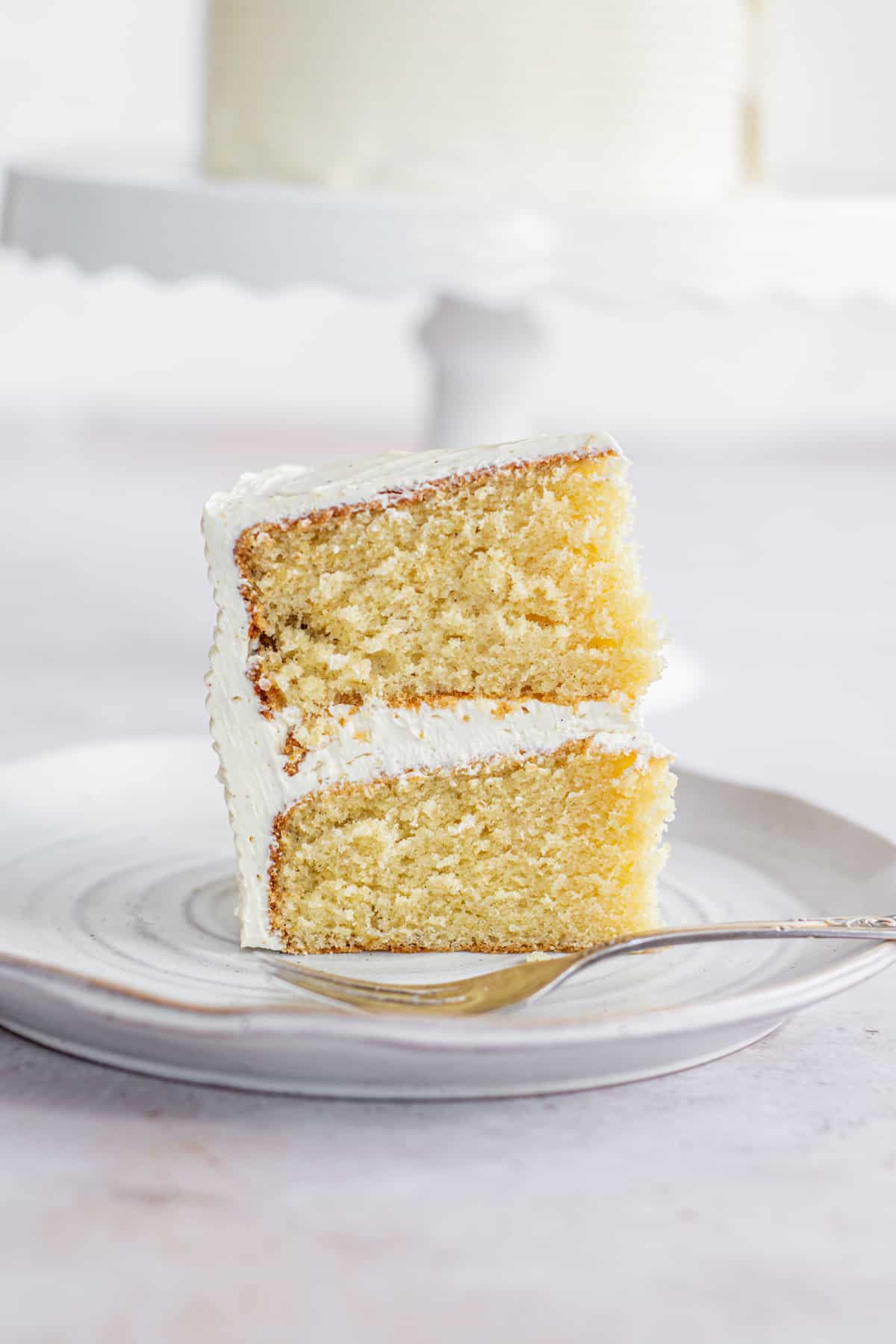
About this 6-inch vanilla cake recipe
The cake is made up of two small cakes. The cake is a basic vanilla cake. I have used a combination of both oil and butter in the batter. The butter brings delicious flavor, while some oil helps keep the cake moist.
The brown butter frosting is the star of the show. It’s a Swiss meringue buttercream with added brown butter. This makes it rich in flavor, creamy, yet light. Brown butter is amazing in baked goods, it brings so much flavor by just doing something simple. It brings in notes of caramel and toffee.
Swiss meringue buttercream (SMBC) is made by gently cooking egg whites and sugar in a double boiler until the sugar has melted. The mixture is then whipped into a stiff meringue. Next, lots of room-temperature butter is whisked into the meringue, a little at a time, until the mixture becomes a cloud of delicious frosting.
Swiss buttercream can seem like a tricky frosting, as some things can go wrong. The good thing is that there is usually an easy fix for all the issues! Read this chocolate Swiss meringue buttercream guide for more details.
If you want a quick chocolate frosting, I’ve got a small-batch American chocolate buttercream you can use or this not-to-sweet vanilla buttercream.
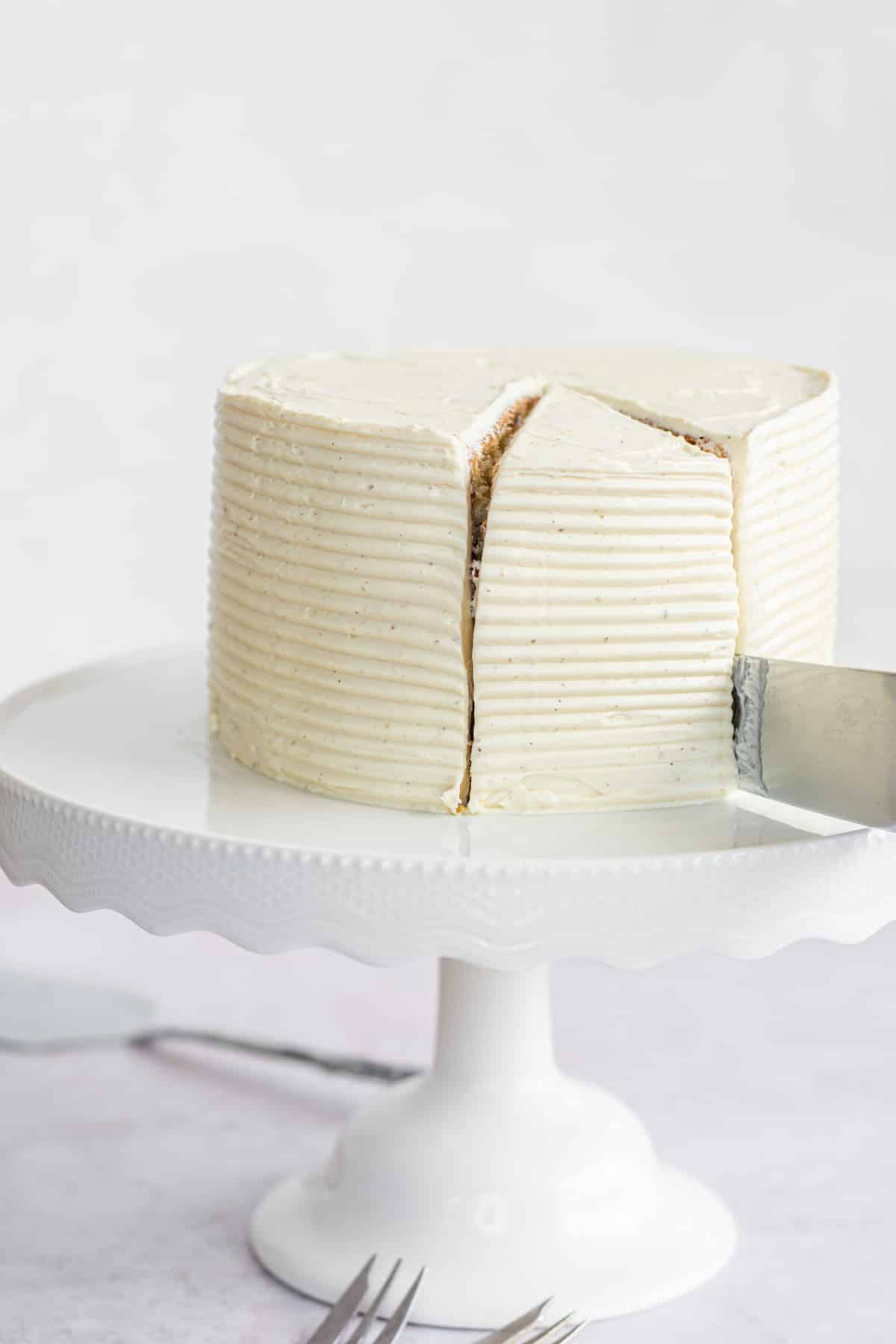
The ingredients
You only need simple ingredients for this small vanilla cake recipe and the frosting. Note – The amounts are in the printable recipe card below, but here is an ingredient list.
- All-purpose flour.
- Baking powder
- Baking soda
- Salt
- Unsalted butter
- Vegetable oil (you can use liquid coconut oil or other mild-tasting vegetable oil)
- Granulated white sugar
- Large whole eggs
- Vanilla bean paste or pure vanilla extract. (Don’t skimp on the quality of this, as it’s a key part of a good vanilla cake.)
- Whole milk
- Vinegar or lemon juice. A little acidity helps the cake rise and creates a more tender crumb, as acid halts the gluten development in the flour.
For the frosting
- Egg whites
- Granulated sugar
- Unsalted butter or use salted and omit the added salt. Some butter will be browned, and some will be left as is
- Vanilla paste or extract
- Salt

Equipment
You’ll need a hand or stand mixer to cream the butter and sugar in the cake.
A stand mixer is needed for the frosting because the egg whites and butter need a long mixing period.
They are baked in two round 6-inch pans. If you have one round cake pan, you can bake one layer at a time and use the same pan twice.
Method
The cakes
Step 1. Preheat the oven to 350°F/180°C. Grease two 6-inch cake pans and line the bottom of the pans with parchment paper.

Step 2. Whisk together the flour, baking powder, baking soda, and salt in a small bowl, and set this flour mixture aside.
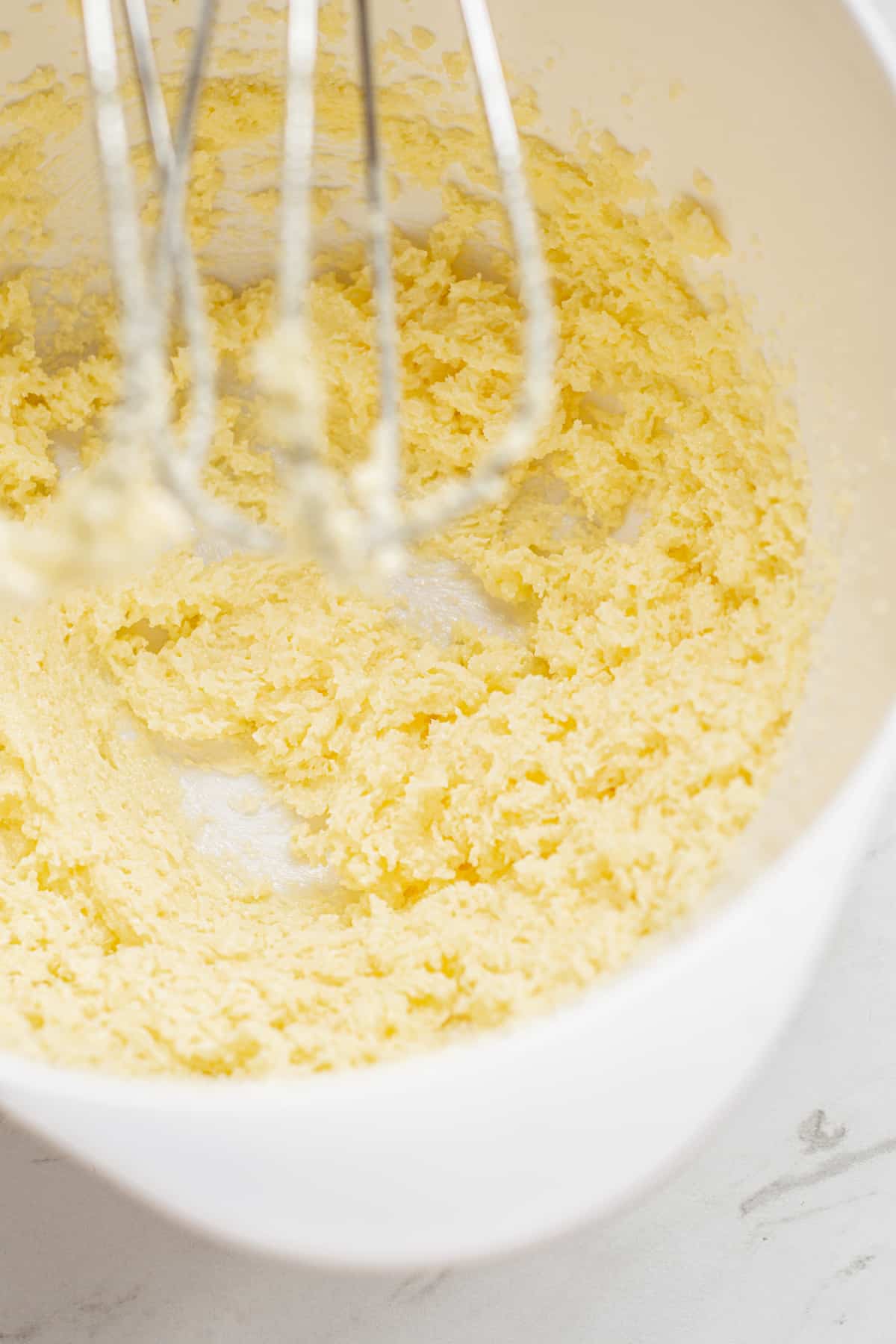
Step 3. In a bowl of a stand mixer fitted with a paddle attachment or in a medium bowl and electric mixer, beat room temperature butter and oil on medium speed until it’s creamy and combined.
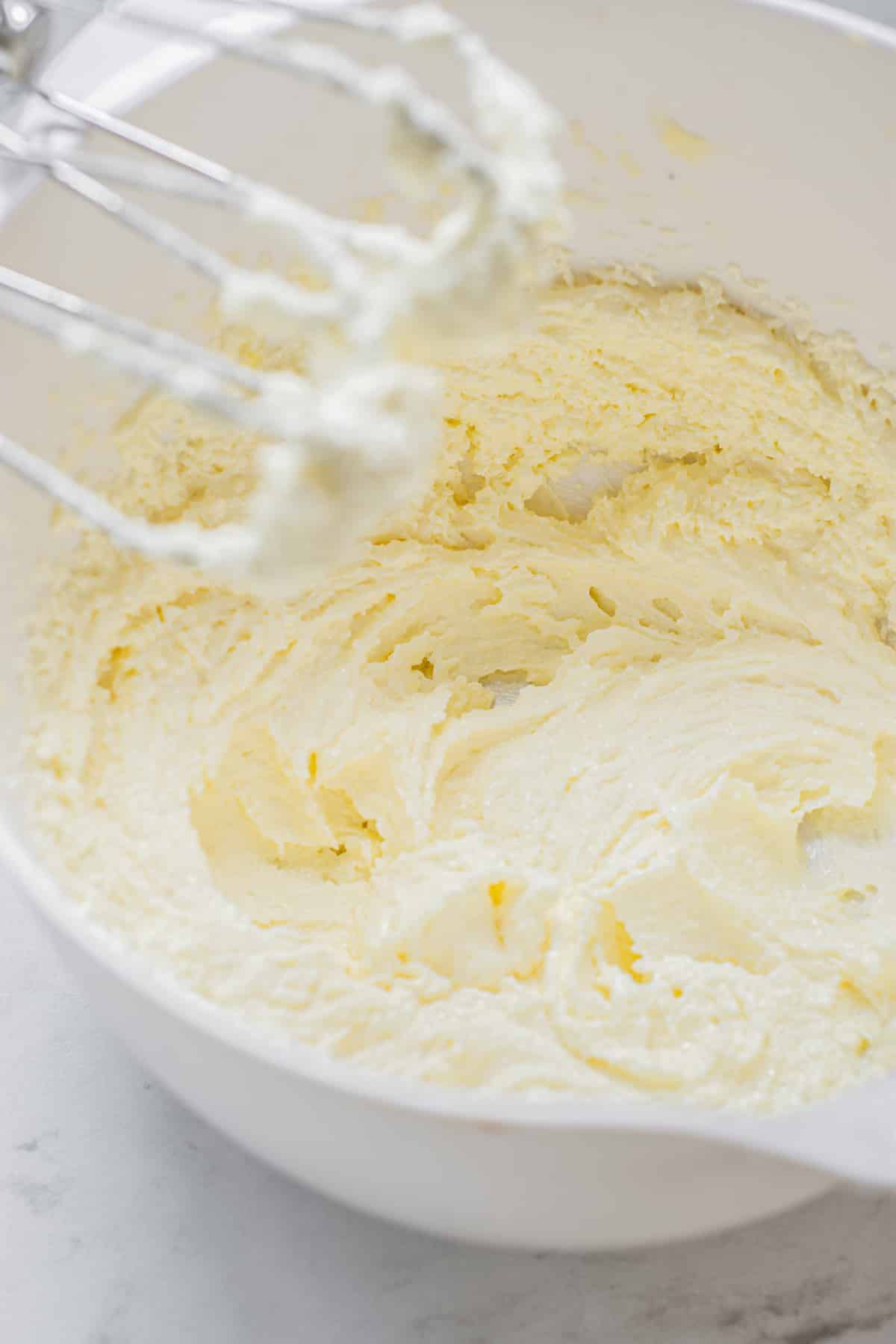
Step 4. Add in the granulated sugar. Beat on high speed for around 3-4 minutes until it’s very light in color and creamy, and the volume increases.

Step 5. Add in the vanilla and eggs, one at a time, and beat in after each addition.
Step 6. In a small bowl, stir together the milk and vinegar.

Step 7 – Add half the dry ingredients to the butter mixture and half the milk. Use a rubber spatula to stir it in well until well combined.
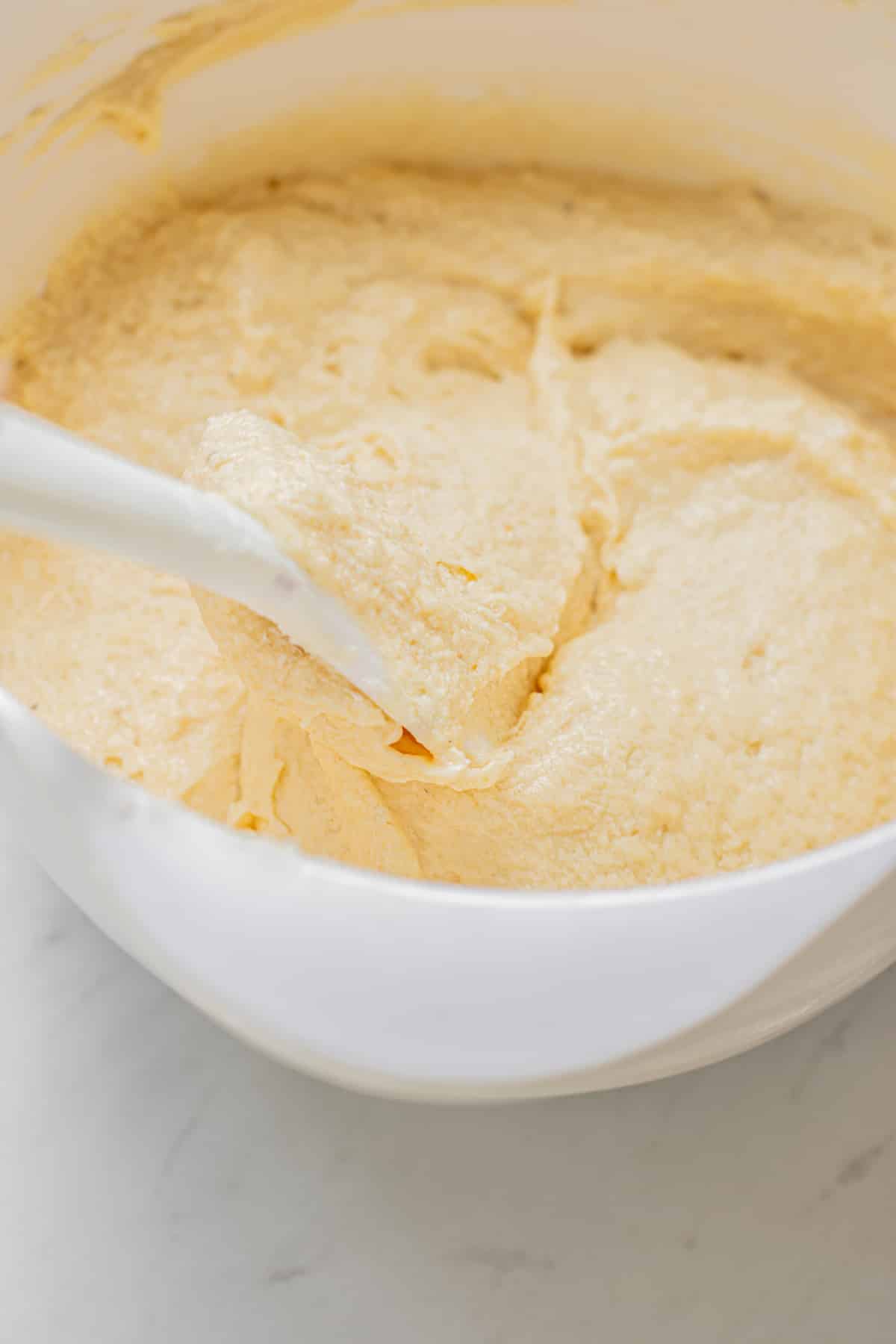
Step 8. Repeat with the rest of the dry ingredients and milk mixture.
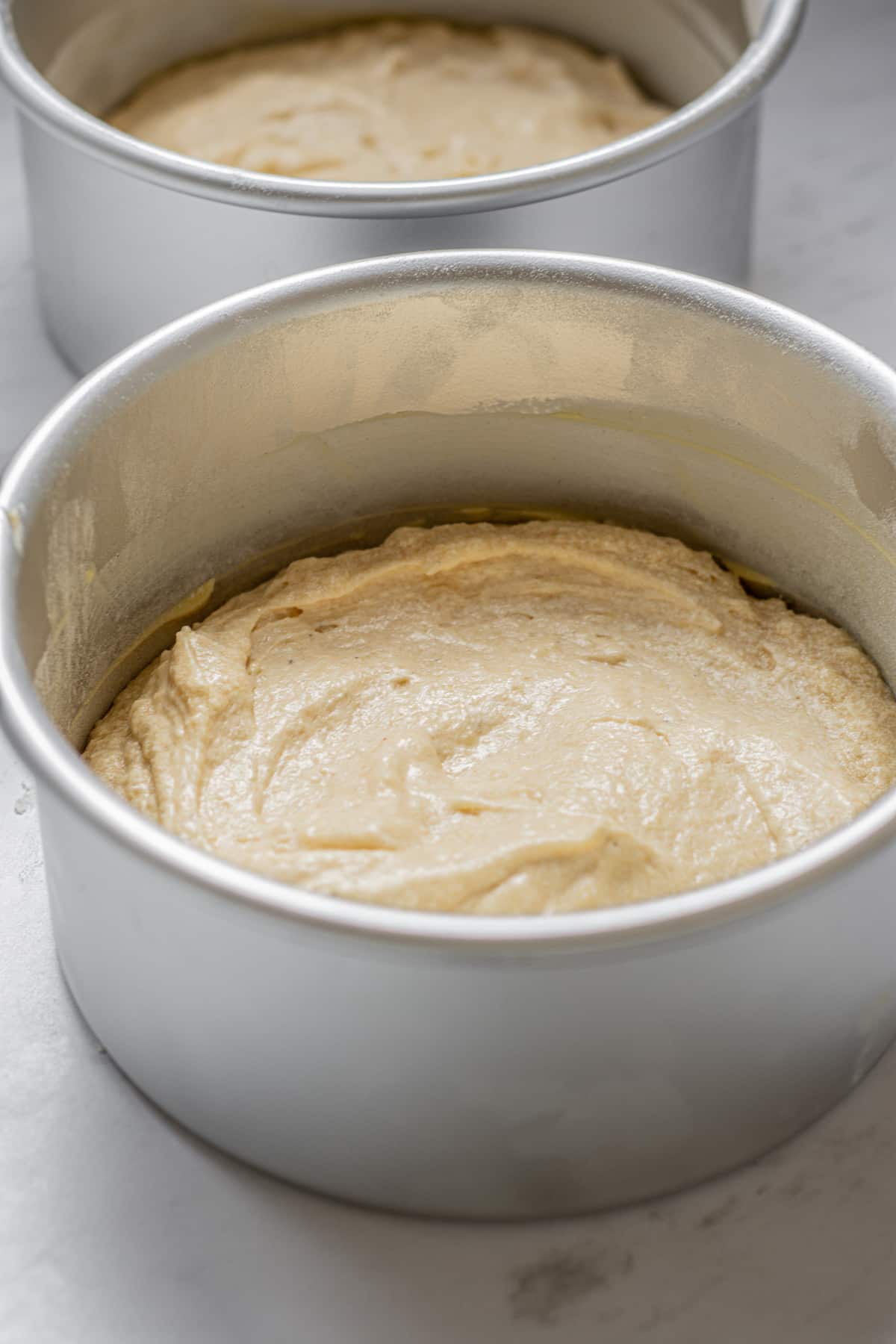
Step 9 – Divide the cake batter evenly amongst the cake pans and smooth down the tops of the batter with a small offset spatula.
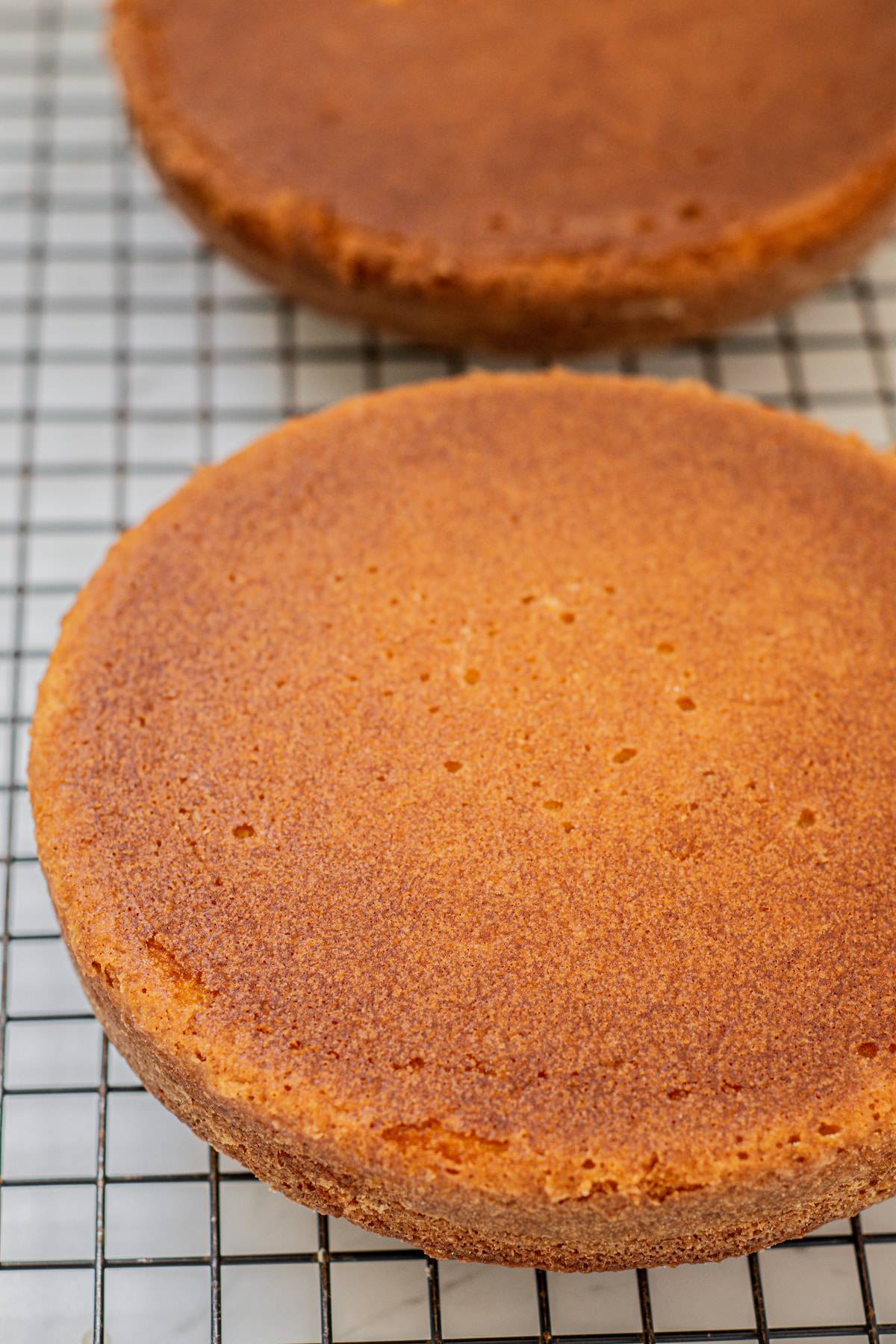
Bake the cakes for around 25 minutes until the tops spring back when touched and a skewer inserted into the middle of the cakes comes out clean.
Step 10 – Remove the cakes from the oven and let them cool for 10 minutes in their pans, then turn them onto a wire cooling rack and allow them to cool completely.
The Swiss Meringue Buttercream
Step 11- While the cakes are baking, brown the butter so it can cool.
Over medium heat, let the butter melt. Avoid using a dark pan, as you will struggle to see the caramelization of the butter and run the risk of burning it.
Once you have melted butter, let it cook for around 3 minutes, stirring occasionally until the milk solids in the butter have caramelized into a golden amber color and the butter smells nutty.
Pour the browned butter into a flat dish and refrigerate it until it has just solidified but is not too cold or rock hard.

Egg Whites
Step 12- Bring a pot of water (with 1 inch of water) to a simmer.
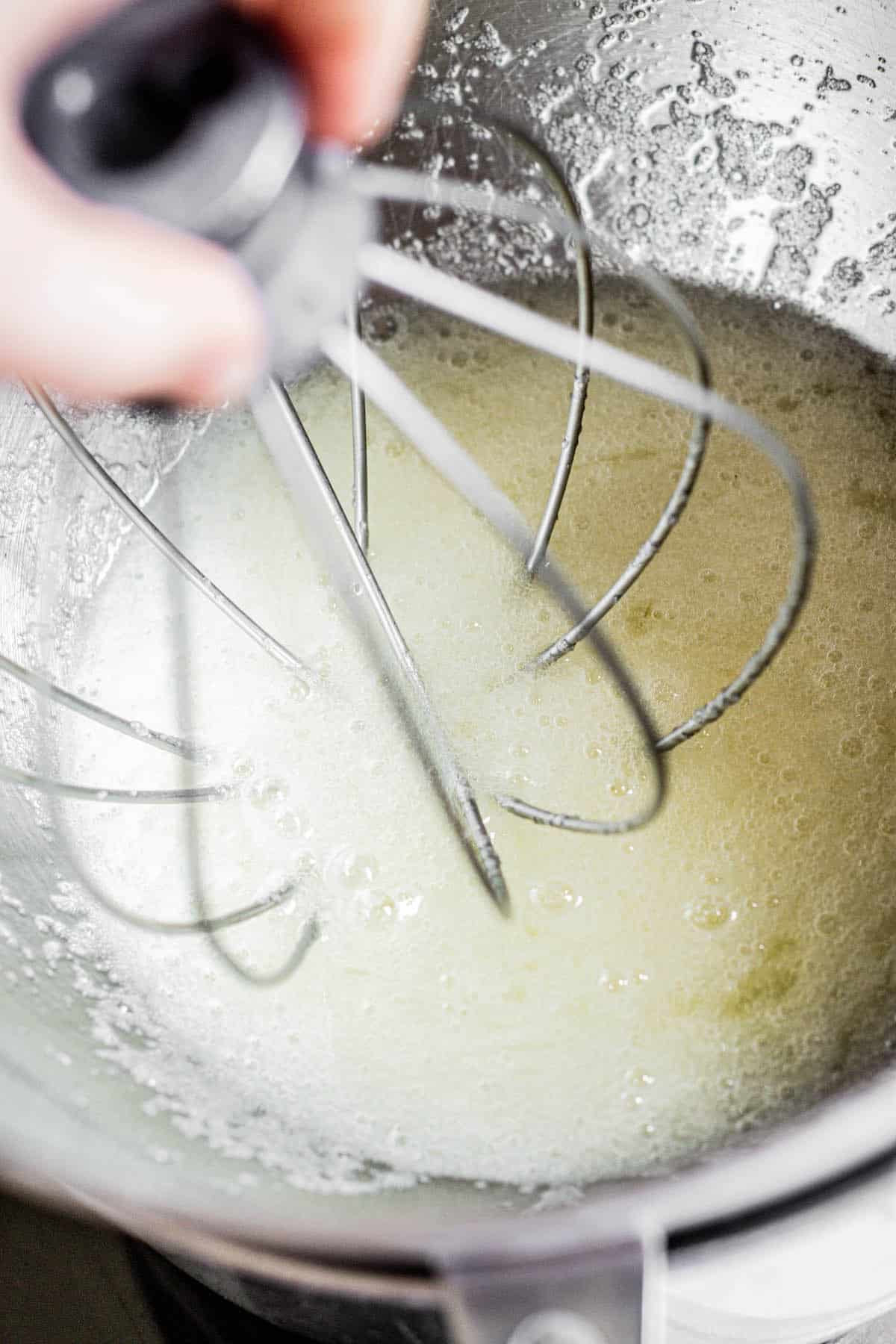
Step 13 – Add egg whites and granulated sugar to the stand mixer bowl. Balance the bowl over this simmering water bath. Whisk continuously as the egg whites warm up and keep whisking until all the sugar has dissolved or the temperature reads 160°F (71°C) on an instant thermometer.
Don’t stop stirring, or some egg whites may overcook on the edges of the bowl.
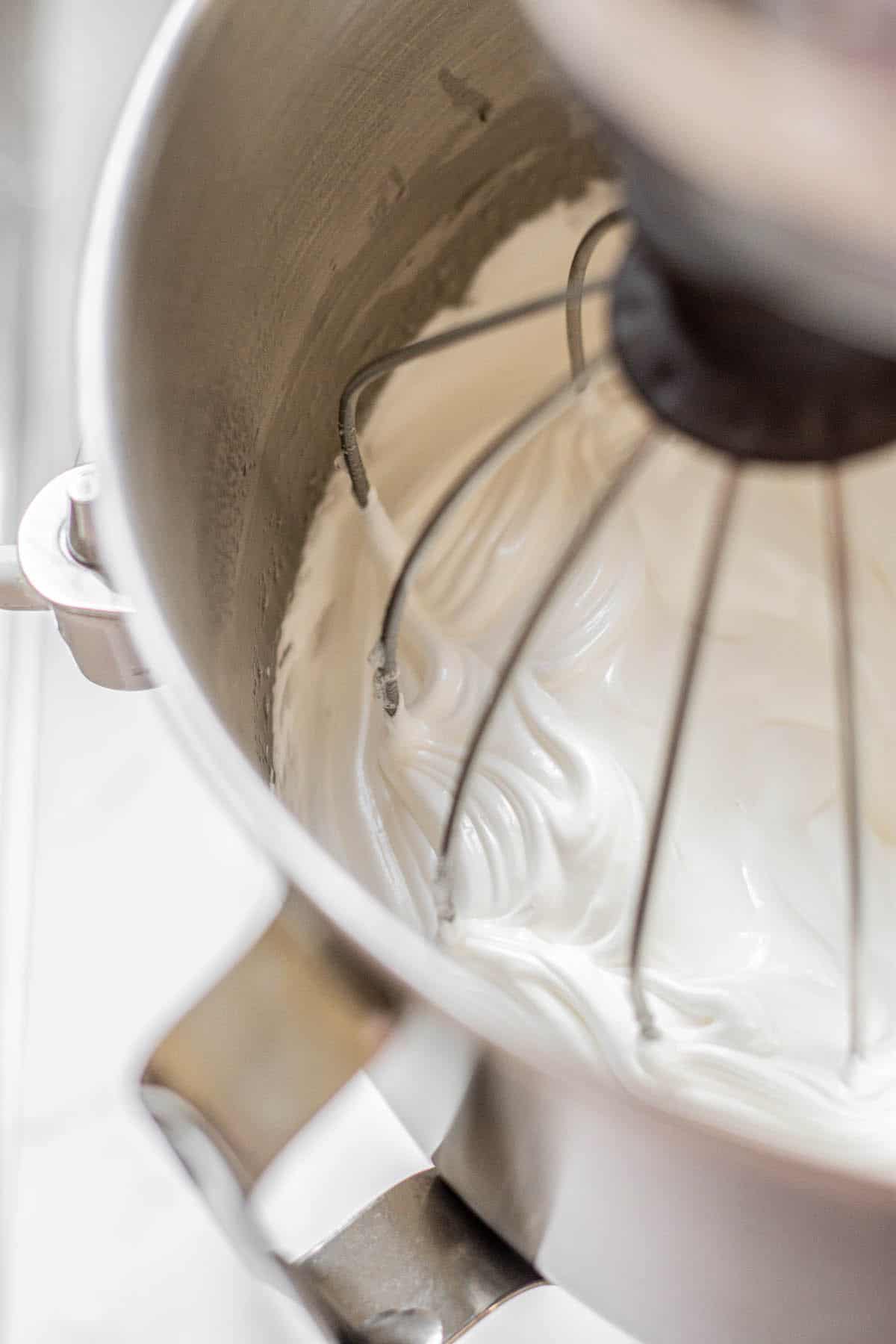
Step 14 – Once the sugar has dissolved, place the bowl in your stand mixer fitted with the whisk attachment. Beat on medium-high speed until a meringue with stiff peaks forms and the meringue has cooled down to room temperature. When you touch the sides of the bowl, they shouldn’t feel warm.

Step 15 – With the mixer on medium-high speed, feed in the solidified brown butter, followed by the rest of the butter, a cube at a time. Allow the butter to incorporate fully before adding the next cube. At this point, the frosting can suddenly appear split or curdled and look like cottage cheese.
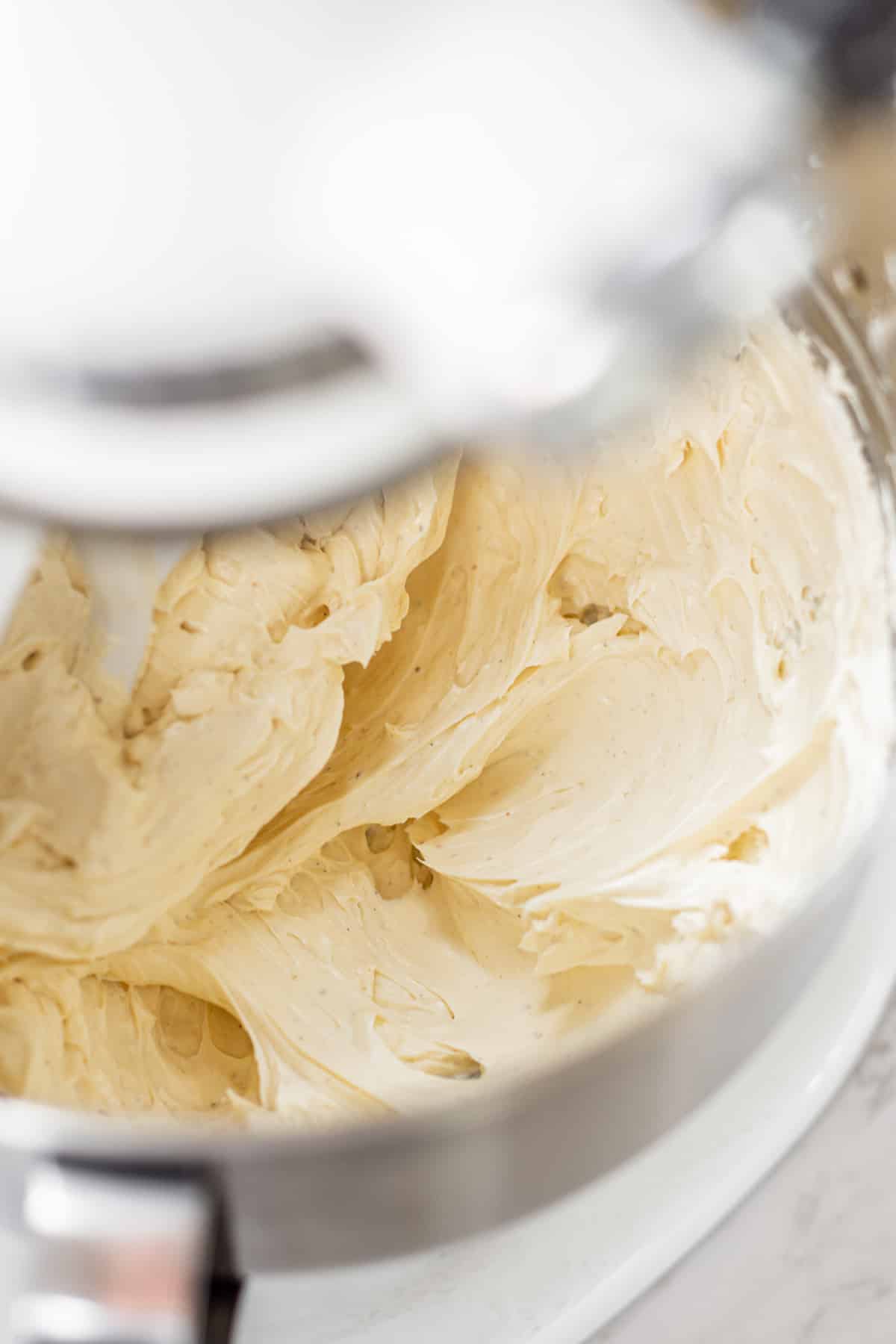
Just keep beating the mixture until it becomes a thick and cohesive buttercream. This can take a lot of beating, so don’t give up if it doesn’t seem to come together – it will. Keep beating it until it no longer looks greasy.
Once the mixture is thick and cohesive, beat in the vanilla and salt until thick and fluffy. Switch to the paddle attachment and beat low-medium speed for another minute or two to remove some of the larger air bubbles in the buttercream.
Frosting the cake
Only frost the cake once the layers are completely cooled. You can speed up the cooling process by placing the cakes in the fridge or freezer.
Step 16 –Use a serrated knife to level the cooled cakes and make their tops flat and even.
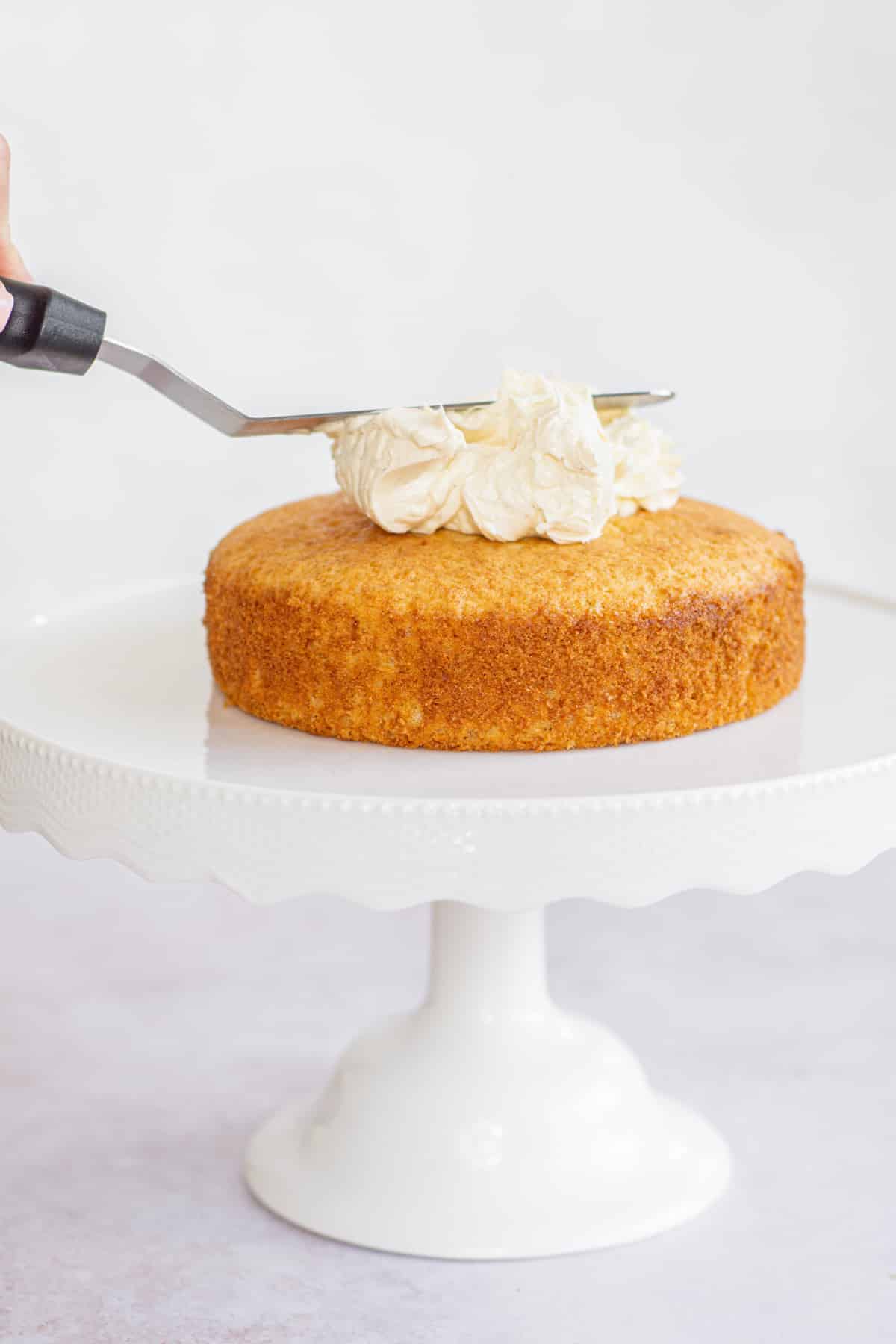
Step 17 – Place one layer of cake on a cake turntable or cake stand. Scoop on some frosting and use a small offset spatula to spread out the frosting on top of the cake layer.
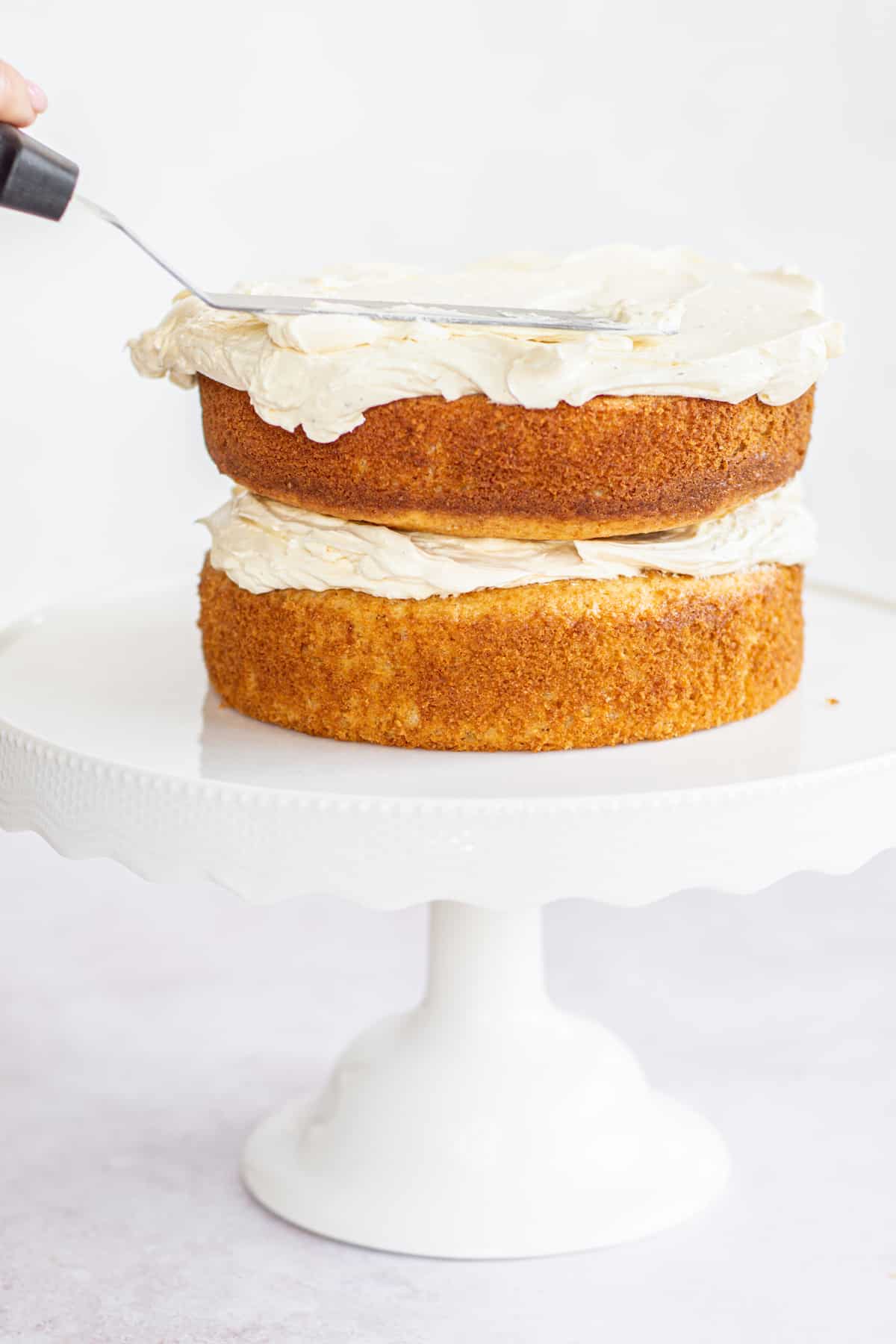
Step 18 – Add on the second cake layer. Placing the top layer upside down will give a nice, smooth top to work with. Add a few scoops of frosting on top spread it out with the spatula.
Add a thin coat of frosting around the cake. Use a frosting smoother to smooth it out. Chill the cake for around 20 minutes in the fridge until the frosting has firmed up.
Add a thick layer of frosting to the cake and use a bench scraper to smooth it out. Then, you can use a serrated frosting smoother to make patterns on the side of the cake if you wish.

The remaining frosting can be added to a piping bag and piped on top of the cake or used to pipe decorations of your choice.
Serving and storing
Refrigerate the cake until ready to serve, then take it out of the fridge at least 30 minutes before slicing.
Leftover cake can be stored in the refrigerator in an airtight container for up to 4 days.
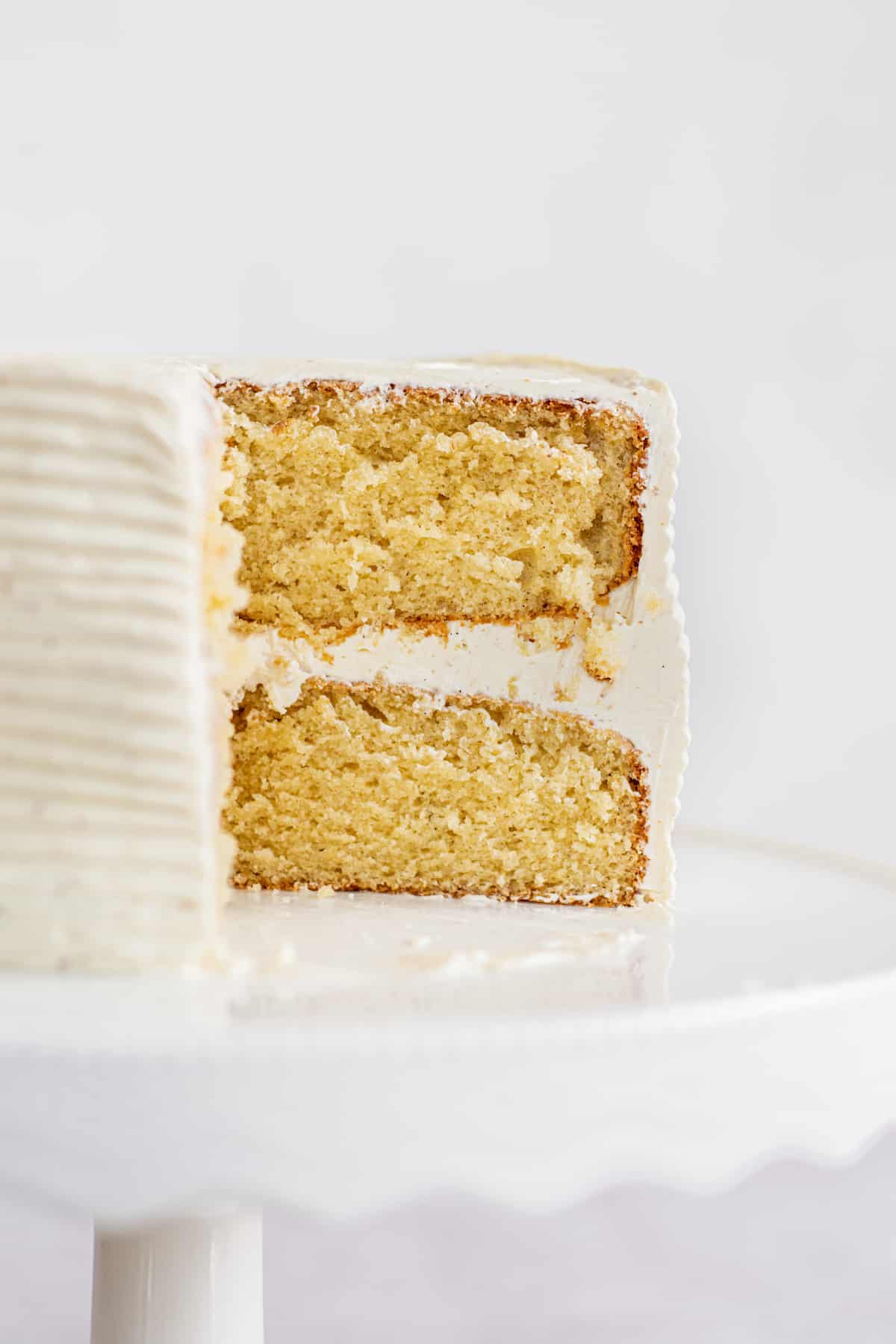
Make ahead
The cake layers can be made and frozen before you need them. Frozen layers of cake are also easier to frost.
The frosting can also be made and refrigerated for up to 3 days or frozen for up to 3 months. Read more about bringing it back to a fluffy texture in this Swiss meringue buttercream post.
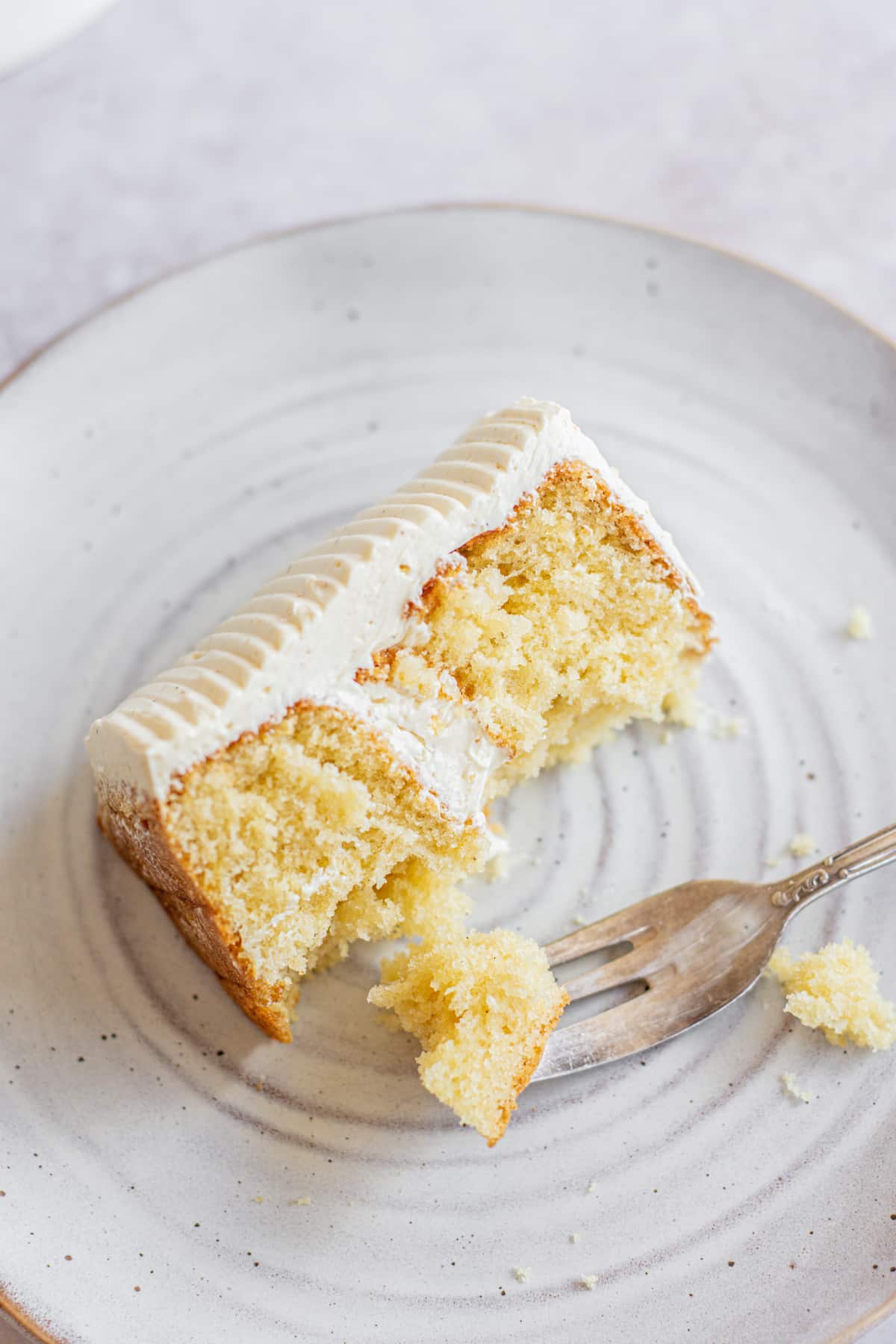
More mini-cake recipes
If you loved this recipe, you might like these too!
- 6-Inch Red Velvet Cake
- The Perfect Small Carrot Cake Recipe
- Easy Small Chocolate Cake Recipe (6-inch)
- Small batch vanilla cupcakes
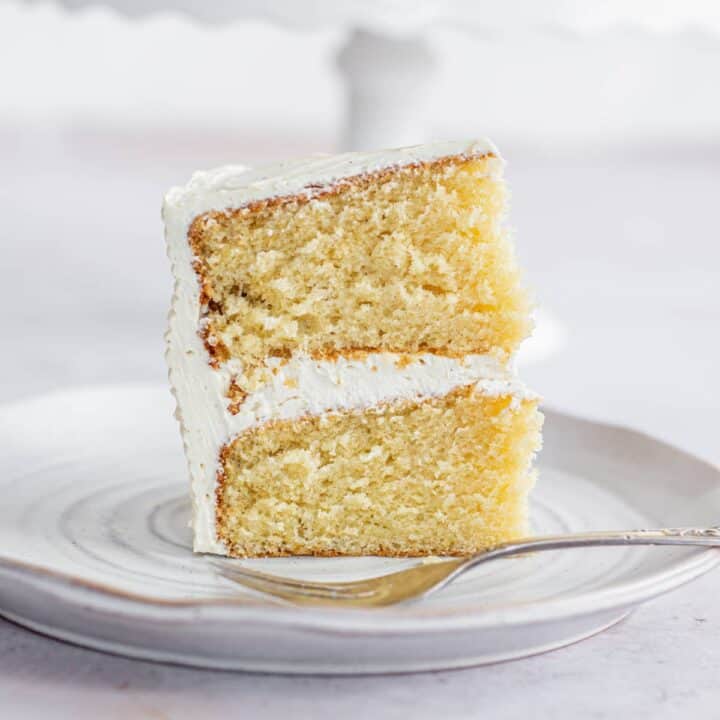
Mini Vanilla Cake with Brown Butter Frosting
A light and tender vanilla cake sandwiched together with creamy brown butter Swiss meringue buttercream.
Ingredients
- 188g (1 1/2 cup*) all-purpose flour
- 1 teaspoon baking powder
- 1/4 teaspoon baking soda
- 1/2 teaspoon salt
- 56g (1/4 cup) unsalted butter, room temperature
- 54g (1/4 cup ) vegetable oil
- 150g (3/4 cup) granulated sugar
- 2 large eggs
- 1 teaspoon vanilla paste
- 120g (1/2 cup) milk
- 1 1/2 teaspoons apple cider vinegar or lemon juice
Frosting
- 3 large egg whites
- 150g (3/4 cup) granulated sugar
- 226 (1 cup) unsalted butter, room temperature, divided
- 1 teaspoon vanilla paste or extract
- Pinch of salt
Instructions
- Preheat the oven to 350°F/180°C. Grease two 6-inch cake pans and line the bottom of the pans with parchment paper.
- In a small bowl, whisk together the flour, baking powder, baking soda, and salt, and set this flour mixture aside.
- In a bowl of a stand mixer fitted with a paddle attachment or in a medium bowl and electric mixer, beat room-temperature butter and oil on medium speed until it's creamy and combined. Add in the granulated sugar and beat on high speed for around 3-4 minutes until it's very light in color and creamy.
- Add in the vanilla and eggs, one at a time, and beat in after each addition.
- In a small bowl, stir together the milk and vinegar.
- Add half the dry ingredients to the butter mixture, stir them in, then add half the milk. Use a rubber spatula to stir it in well until well combined. Repeat with the rest of the dry ingredients and milk mixture.
- Divide the cake batter evenly amongst the cake pans and smooth down the tops of the batter with a small offset spatula.
- Bake the cakes for around 26-28 minutes until the tops spring back when touched and a skewer inserted into the middle of the cakes comes out clean.
- Remove the cakes from the oven and let them cool for 10 minutes in their pans, then turn them onto a wire cooling rack and allow them to cool completely.
The brown butter for the buttercream
- While the cakes are baking, prepare the brown butter for the frosting, as this needs time to cool. Over medium heat, melt 75g (1/3 cup) of the butter. Avoid using a dark pan, as you will struggle to see the caramelization of the butter and run the risk of burning it.
- Once you have melted butter, let it cook for around 3 minutes, occasionally stirring until the milk solids in the butter have caramelized into a golden amber color and the butter smells nutty.
- Pour the browned butter into a flat dish. Ensure you get all the browned bits, as that's where the flavor is. Refrigerate it until it has solidified (but not so cold that it's rock-hard).
Swiss Meringue Buttercream
- Bring a pot of water (with 1 inch of water) to a simmer.
- Add egg whites and granulated sugar to the stand mixer bowl. Balance the bowl over this simmering water bath. Whisk continuously as the egg whites warm up and keep whisking until all the sugar has dissolved or the temperature reads 160°F (71°C) on an instant thermometer. Don’t stop stirring, or some egg whites may overcook on the edges of the bowl.
- Once the sugar has dissolved, place the bowl in your stand mixer fitted with the whisk attachment. Beat on medium-high speed until a meringue with stiff peaks forms and the meringue has cooled down to room temperature. When you touch the sides of the bowl, they shouldn't feel warm.
- With the mixer on medium-high speed, feed in the solidified brown butter, followed by the rest of the butter, a cube at a time. Allow the butter to incorporate fully before adding the next cube. At this point, the frosting can suddenly appear split or curdled and look like cottage cheese. Just keep beating the mixture until it becomes a thick and cohesive buttercream. This can take a lot of beating, so don't give up if it doesn't seem to come together - it will. Keep beating it until it no longer looks greasy.
- Once the mixture is thick and cohesive, beat in the vanilla and salt until thick and fluffy.
- Switch to the paddle attachment and beat on low speed for 10 minutes to remove some larger air bubbles in the buttercream.
Frosting the cake
- Only frost the cake once the cake layers are completely cooled. You can speed up the cooling process by placing the cakes in the fridge or freezer.
- Place one cake layer on a cake turntable or cake stand. Scoop on some frosting and use a small offset spatula to spread the frosting on top of the cake layer. Add on the second cake layer. Placing the top layer upside down will give a nice, smooth top to work with.
- Add a few scoops of frosting on top, spread it out with the spatula, and add a thin coat of frosting around the cake. Use a bench scraper to smooth it out, then chill the cake for around 20 minutes in the fridge until the frosting has firmed up.
- Add a thicker layer of frosting to the cake and use a bench scraper to smooth it out. Then, you can use a serrated bench scraper to make patterns on the side of the cake if you wish.
- Leftover cake can be stored in an airtight container in the fridge for up to 4 days.
Notes
*The cup sizes given are for US cups. Note that these are smaller than metric cup sizes. For best results, use a kitchen scale and grams.
Recommended Products
As an Amazon Associate and member of other affiliate programs, I earn from qualifying purchases.
Nutrition Information:
Yield: 8 Serving Size: 1Amount Per Serving: Calories: 564Total Fat: 23gSaturated Fat: 10gTrans Fat: 0gUnsaturated Fat: 11gCholesterol: 89mgSodium: 318mgCarbohydrates: 84gFiber: 1gSugar: 65gProtein: 6g
This is an informational estimate only. I am not a certified Dietitian or Nutritionist




